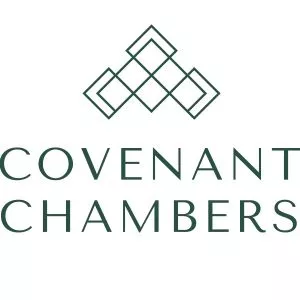Who owns rights to IP? How can they be used? Director Ronald JJ Wong and Associate Stuart Peter explore some of these questions and issues, along with possible case studies in a four-part series on the creations of the mind. This article, the first in the series, focuses on patents.
How something is treated as intellectual property ("IP") under the law depends on the form it takes. Tangibly expressed works, inventions, designs, goodwill and/or trademarks are all treated differently under the law and governed by different laws and regulations.
Patents
Patents are monopoly rights granted to inventors for inventions that are new (novel), involve an inventive step, and are capable of industrial application.1
Inventions can be in the form of products or processes. 'Discoveries' or 'theories' are excluded. For example, the law of gravity is not an invention and thus cannot be patented, since it is not 'invented' by people, but rather simply observed, studied and experimented on by people to prove its existence.2 Literary works generally are also not treated as 'inventions', and are more properly governed by copyright laws.
Unlike other types of intellectual property such as copyright or trade secrets, the rights consisted in a patent are only obtained on application by an inventor to a relevant authority. In Singapore, the application for patents is governed by the Patents Act 1994 (Rev Ed 2020) (the "Patents Act"), and the relevant authority here is the Intellectual Property Office of Singapore ("IPOS"). Patent protection (if granted) generally lasts for 20 years from the date of filing of the patent application.3
(1) Who is entitled to the grant of a patent?
The default position is that the inventor of an invention is entitled to a grant of a patent.4 The inventor is generally the person who came up with the inventive concept constituted in the invention sought to be patented. Thus, the person need not have the technical capabilities to make their invention functional in order to be treated as the inventor for the purposes of making an application.5
However, where the inventor has agreed with a third party that all rights developed by the inventor in the course of a particular project shall vest in such third party, the patent for any such invention would be granted to that party instead.6 Additionally, if an applicable rule of law (including foreign laws) provides for a third party to be entitled to such grant, such third party shall be so entitled under the Patents Act.7
In the context of inventions created by an employee in the course of employment, however, the law provides that the ownership of the invention shall vest in the employer.8 The employer and employee are however free to agree to an alternative arrangement on ownership of inventions by contract or assignment.
(2) Validity of patent
It should be remembered, however, that even after a patent has been granted by IPOS, it may not necessarily be well-founded as a matter of law. The validity of a patent can be subsequently challenged for not meeting the requirements of the Patents Act, such as for lacking novelty (and thus not being new or inventive).
Thus, a person can apply to IPOS for the revocation of another person's patent on the grounds that (among other things) it is not patentable (i.e. not new, does not involve an inventive step and/or is not capable of industrial application) or that it was granted to a person not entitled to such grant.
For an invention to be treated as 'new':
- it must not form part of the state of the art for the invention in question (i.e. not be found in materials that are available or accessible to the public).9 Hence, it is important not to disclose inventions publicly e.g. at conferences, trade shows, etc. before the patent application has been validly filed. It is also crucial that sharing about an invention with any other person is subject to some confidentiality contract or non-disclosure agreement ("NDA"); and
- it must not be anticipated by any pieces of prior art to the invention (i.e. the invention could not have been one that would have inevitably followed from the existing teaching disclosed in the piece of prior art).10
- For example, in Dien Ghin Electronic (S) Pte Ltd v Khek Tai Ting (t/a Soon Heng Digitax), the Court held that the patented invention of a system comprising a panel of multi-coloured LEDs which could be mounted on the rooftop of a taxi where it could display messages such as "HIRED" or "ON CALL" was not patentable because a piece of prior art described a system developed for buses which had an external panel to display certain information (such as bus numbers) electronically by monochrome lights. Taking this together with the fact that the use of multi-coloured LED displays had become common general knowledge as at the time of the publication of the prior art, the Court took the view that a skilled addressee would arrive at a product which comprised all the essential integers of the patented invention, which was thus deemed 'anticipated' and not novel. The invention for which the patent had been granted was thus not patentable.11
Similarly, for an invention to be treated as involving an 'inventive step', it must not be obvious to a person skilled in the art, having regard to the relevant state of the art.
Finally, for an invention to be capable of industrial application, it simply needs to be applicable to any kind of industry, including agriculture.12
(3) Patent rights and infringement
The patent owner has exclusive rights to do certain acts in relation to the invention, and any person who does the same without a valid licence from the owner will be treated as having infringed the owner's rights granted by the patent.
The prohibited acts in relation to product inventions are:
- the making of,
- disposing or offering to dispose of,
- use of,
- importation of, or
- keeping of, the product.13
Where the invention is a process, the prohibited acts are:
- the use or offering for use in Singapore while knowing that such use without the owner's consent would be an infringement,14 and
- disposing of,
- use of,
- keeping of, or
- importation of,
- any product obtained directly by means of that process.15
Infringement can also be said to occur in circumstances where the specific protections laid out in the patent granted have been breached by a third party.
When infringement has occurred, the owner of the patent may bring civil proceedings i.e. a lawsuit against the infringing party, and may be entitled to the following remedies if the Court decides in the owner's favour:
- Obtaining an injunction (i.e. a court order restraining the infringing party from committing any further or similar acts);
- Damages (i.e. compensation for losses suffered), or an account of profits (i.e. recovery of profits enjoyed by the infringing party);
- A delivery up / destruction order (i.e. infringing party to 'deliver up' or destroy patented products or articles comprising the same); and
- A declaration that the patent is valid and has been infringed.
(4) Duration of Patent Protection
It is important to remember that the duration of patent protection is not indefinite. Once the patent lapses, you will no longer have monopoly rights over the patented invention, and the invention will be a matter of public record that any person can utilise or exploit for their own purposes.
Under the Patents Act in Singapore, a patent takes effect on the date it is granted and continues in force for a period of 20 years from the date of filing the application.
Importantly, prescribed renewal fees must be paid during this 20-year period as well, failing which the patent may lapse and protection of the invention accorded to the inventor will cease.
Footnotes
1. Section 13(1) Patents Act.
2. Law of Intellectual Property of Singapore (2014, Sweet & Maxwell, 2nd Ed) at [30.1.9].
3. Section 36(1) Patents Act.
4. Section 19(2)(a) Patents Act.
5. Dien Ghin Electronic (S) Pte Ltd v Khek Tai Ting [2011] 3 SLR 227 at [13].
6. Section 19(2)(b) Patents Act.
7. Section 19(2)(b) Patents Act.
8. Section 49(1) Patent Act.
9. Law of Intellectual Property of Singapore (2014, Sweet & Maxwell, 2nd Ed) at [30.1.25]-[30.1.26].
10. Law of Intellectual Property of Singapore (2014, Sweet & Maxwell, 2nd Ed) at [30.1.40].
11. Law of Intellectual Property of Singapore (2014, Sweet & Maxwell, 2nd Ed) at [30.1.459]
12. Section 16(1) Patents Act.
13. Section 66(1)(a) Patents Act.
14. Section 66(1)(b) Patents Act.
15. Section 66(1)(c) Patents Act.
The content of this article is intended to provide a general guide to the subject matter. Specialist advice should be sought about your specific circumstances.


